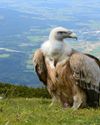
Though, water covers around two-thirds of the earth's surface but water is still a scarce resource as only 1% of world's water is available as drinking water. With due availability of land and air all around, civilizations before have always moved/expanded in search of required drinking water.
Drinking water based on water cycle of earth (ocean-heat evaporation-cloud-rain-ocean) and then available from natural resources on earth is dwindling with time due to many reasons along with increasing population. People have already shifted to the use of smart technologies to transport, clean, uplift drinking water from other different sources but all these water resource technologies have their own geographic region specific limitations in general and for hilly and desert regions in particular. Earth's atmosphere holds six times more fresh water than all of its rivers combined, so, if it is possible technologically to harvest that water, in areas where people have no other fresh water source, can prove to be a wonder.
Atmospheric water extracting devices extract potable water from the air, either through condensation, exposing the air to desiccants (water-absorbing substances), or by pressurizing the air. With the development of science and technology, scientists and engineers are proposing different technologies to extract water from thin air (from fog) which will help people in getting enough drinking water at location specific with low cost. There are four main methods for extracting water from the atmosphere:
Fog nets: setting up physical nets in humid environments to collect the water in the air
Dew plates: using temperature differences to encourage water to condense on metal plates
Sorbents: using chemicals to absorb water from the air, and then heating the material to extract the water
この記事は Scientific India の March-April 2023 版に掲載されています。
7 日間の Magzter GOLD 無料トライアルを開始して、何千もの厳選されたプレミアム ストーリー、9,000 以上の雑誌や新聞にアクセスしてください。
すでに購読者です ? サインイン
この記事は Scientific India の March-April 2023 版に掲載されています。
7 日間の Magzter GOLD 無料トライアルを開始して、何千もの厳選されたプレミアム ストーリー、9,000 以上の雑誌や新聞にアクセスしてください。
すでに購読者です? サインイン

Building world's 1st pyramid
In a preprint study published this summer, researchers proposed that ancient Egyptians built the world's first pyramid the 4,700-year-old Step Pyramid of Djoser, which sits on Egypt's Saqqara plateau using a \"modern hydraulic system\" powered by a long-gone branch of the Nile River.

Climate change arms the world, ovarian cancer pulls the trigger.It's time we disarm them both
Climate change, driven by human activities, leads to environmental changes such as rising temperatures, altered weather patterns, and increased pollution.

Climate Change Added 18 mph to Hurricane Wind Speeds over Past 5 Years
High ocean temperatures caused by global warming boosted maximum intensities for most storms between 2019 and 2023, as well as for every 2024 hurricane.

How Indian Vulture Decline Led to 500,000 Deaths in 5 Years
Once a common sight across India, vultures were abundant scavengers, often seen circling landfills in search of carcasses.

Understanding Monkeypox: Insights and Implications
Monkeypox, a viral zoonotic disease, has gained significant attention in recent years due to its re-emergence and sporadic outbreaks globally.

AI predicts that most of the world will see temperatures rise to 3°C much faster than previously expected
Three leading climate scientists have combined insights from 10 global climate models and, with the help of artificial intelligence (AI), conclude that regional warming thresholds are likely to be reached faster than previously estimated.

Infrared Radiation: A New Player In Mosquito Host-Seeking
The sound of mosquitoes is all around us when the sun sets and the air gets warm and sweltering.

Fish Oil May Benefit to Cure Alzheimer's, disorder: new findings
The benefits of fish and fish oil consumption are well-known in medical science as fish is considered a precious food resource that provides sufficient nutrition to humans.

A new class of antivirals could help prevent future pandemics
The arrival of Paxlovid in December 2021 marked another turning point in the COVID-19 pandemic an effective antiviral that has since successfully treated millions.

Turning carbon emissions into methane fuel
Chemists have developed a novel way to capture and convert carbon dioxide into methane, suggesting that future gas emissions could be converted into an alternative fuel using electricity from renewable sources. Carbon dioxide (CO2) is a greenhouse gas that accounts for a large part of Earth's warming climate, and is produced by power plants, factories and various forms of transportation.